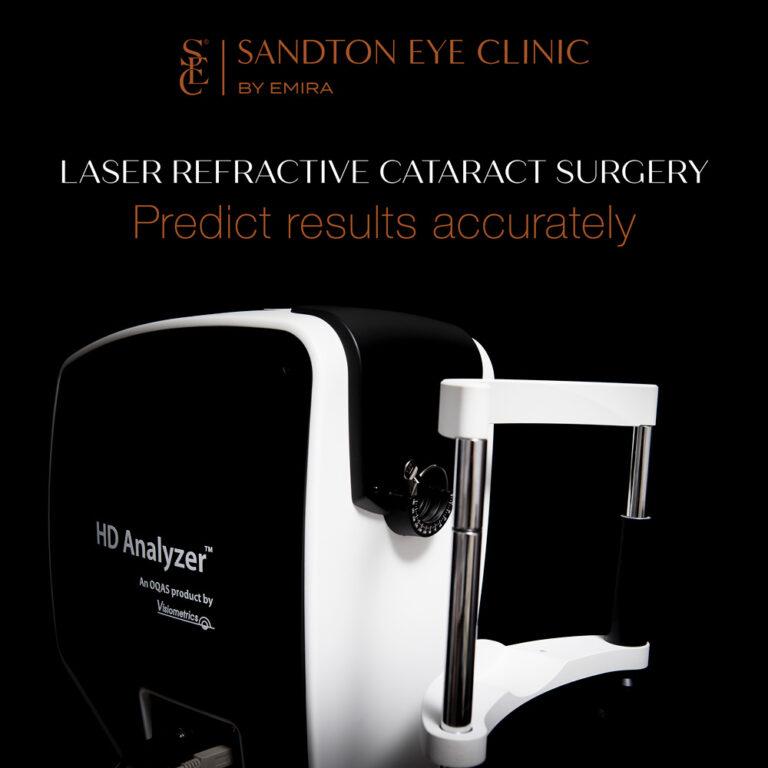Ageing and your vision: Can you fight presbyopia and cataracts?
All of us must surrender to old age slowly but surely. Around age 45 you have readers in every room, yet when you need one, you just can’t find it. From around age 60, you slowly but surely develop faded, slightly blurry vision.
Is surrender really the answer or can you fight this attack on your vision? Both presbyopia (needing readers) and cataracts are inevitable. Both can also be corrected with modern technology in very safe 15–30-minute procedures.
If you are between 45 and 60 you likely only need PresbyLasik to get rid of those readers. If older than age 60 modern Laser Refractive Cataract Surgery makes it possible to live without glasses again.
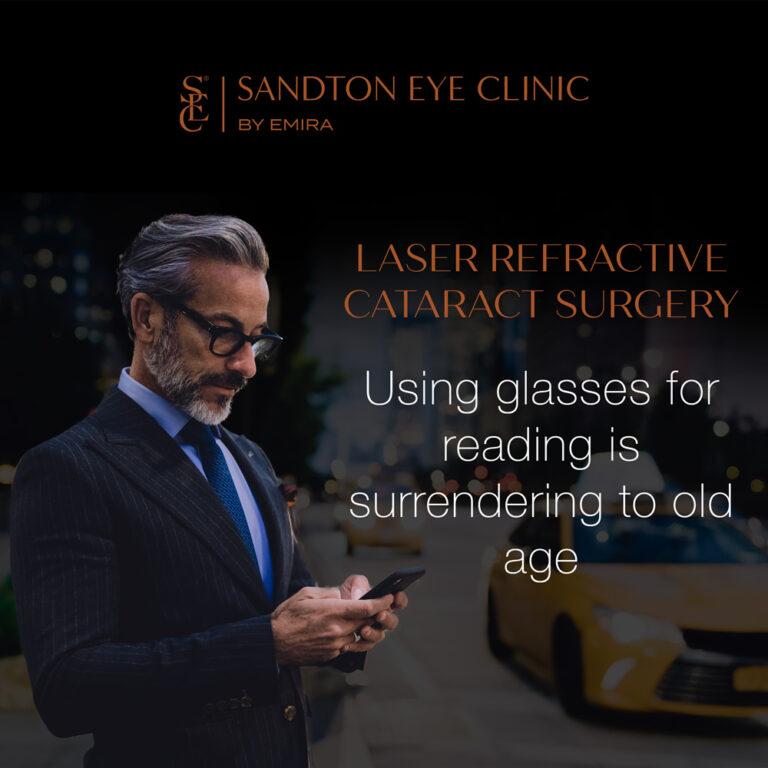
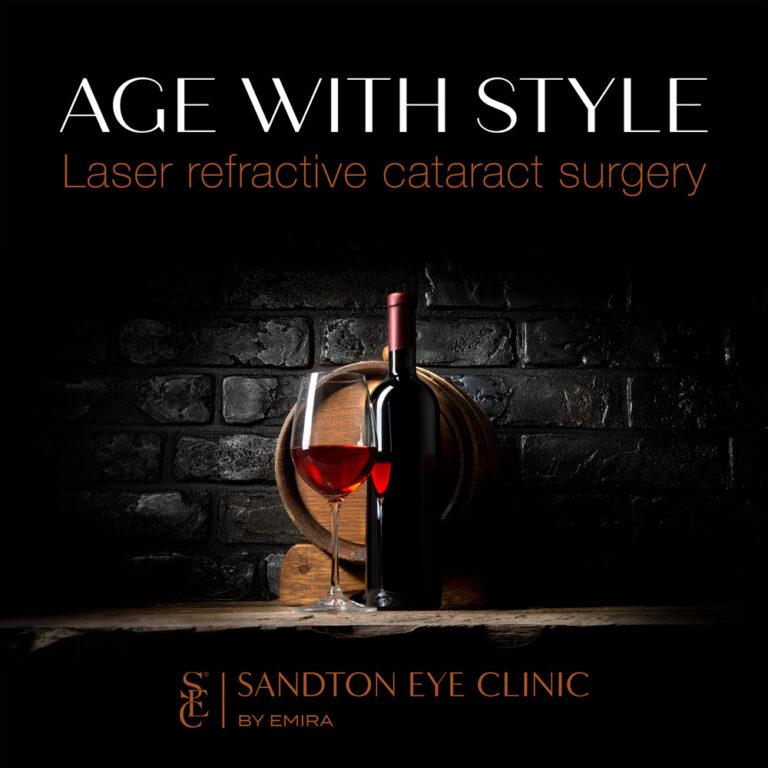
When is the right time for cataract surgery?
As yet there are no lens implants that are as good as the natural healthy human lens in a young person. The key to cataract surgery is that one should wait long enough that the vision after surgery will be better than before. In the past this wait was long. Cataracts often claimed the toll on your quality of life before surgery was recommended. Dull, yellow vision, glare and needing more light to read can all be attributed to cataracts.
With modern lenses, cataract surgery can be done sooner. If spectacle independence suits your lifestyle and you choose multi-focal lenses you can expect better quality vision after surgery than with a mono-focal lens. This means that surgery can even be done while the lens is still relatively clear with great visual outcomes. A recent advance, ocular scatter index, can predict how much visual improvement can be expected after surgery. Struggling while waiting for your cataracts to be ‘ripe’ is not the only option anymore.
How can you invest in cataract surgery?
Cataract surgery is one of the safest and most highly perfected surgical procedures in medicine, with a more than 98% success rate. Most problems can be treated successfully.
Cataract surgery is performed under a microscope and precision is key. Modern advances can make this procedure even more accurate. In laser assisted cataract surgery a femtosecond laser replaces the use of a blade. It also breaks up the lens and cataract for easy removal. Use of a laser can improve the precision and accuracy, potentially reducing risks of cataract surgery.
This can be combined with computer assisted cataract surgery where assistance functions are projected directly into the surgical field.
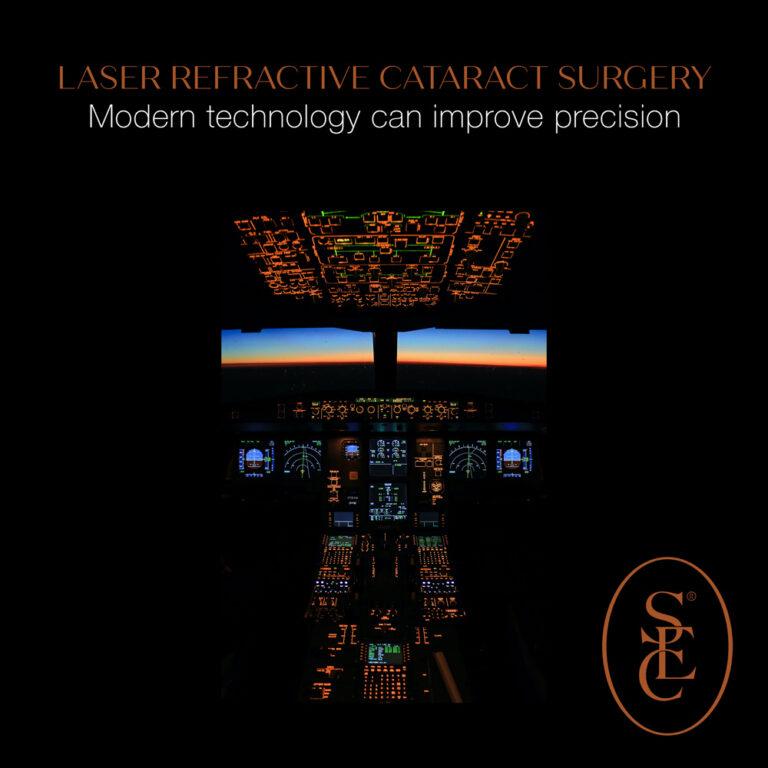
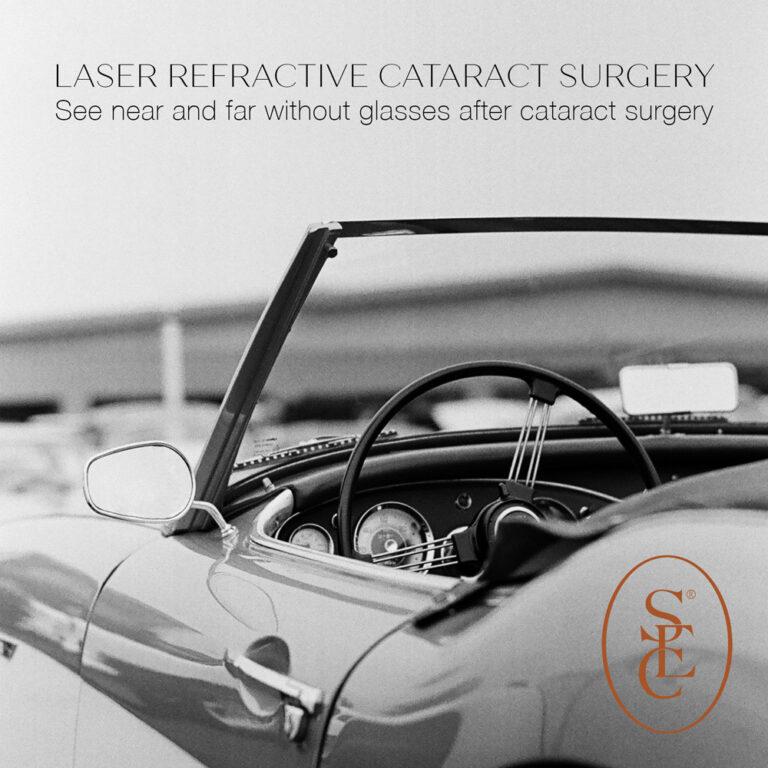
What are the lens options when having cataract surgery?
If you have cataracts that influence your via
When your ophthalmologist discusses lens options with you, he/ she will take your lifestyle and anatomy of your eyes into account to choose the best option for you. Planning is everything. The Vivior Monitor is mounted on spectacles and worn for a day or two. It offers objective data on the patients’ lifestyles to support the optimal selection of a lens.
If you do not mind wearing spectacles mono-focal lenses come at the lowest cost but requires the use of glasses most of the time.
Multi-focal lenses reduce spectacle dependence and can be a great option for someone with an active lifestyle or even if you are just tired of searching for your glasses. 90% of patients are completely spectacle independent. Some patients use glasses for extended reading. More than ninety-nine percent of multi-focal lens patients in an FDA clinical study said they would choose the same lens again.
Will my medical aid pay for cataract surgery?
Cataracts are a PMB (Prescribed Minimum Benefit) condition. This means that medical aids are by law required to cover basic cataract surgery.
What is seen as basic and what comes at an extra cost? There are three parties involved in surgery: your ophthalmologist, your anesthetist, and the hospital. If all these parties charge medical aid rates or have a contract with your medical aid, there should be no co-payment. Medical aids cover lenses to a specific amount and the lens you choose may have a co-payment.
If you choose premium surgery and spectacle independence you will most likely have a co-payment on your multi-focal lenses and laser assisted cataract surgery. Freedom from spectacles means you will save on spectacles in the long run and have an improved quality of life.
You will have to visit your ophthalmologist prior to surgery. This is covered from your day to day or savings benefits by your medical aid. If you visit a doctor who does not have a contract with your medical aid, they may charge above scheme rate and you could have a co-payment.
